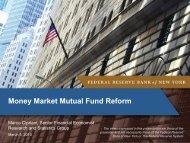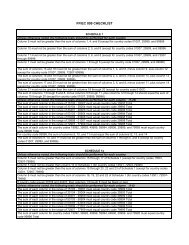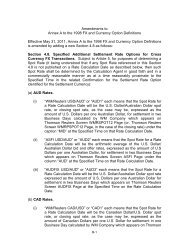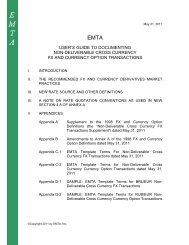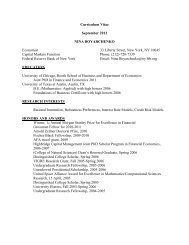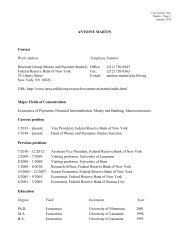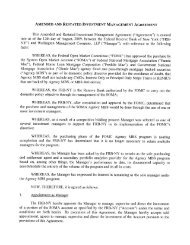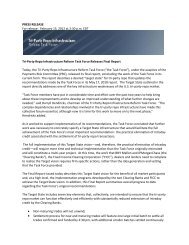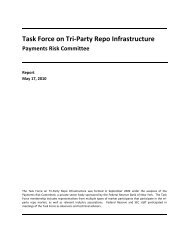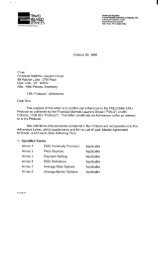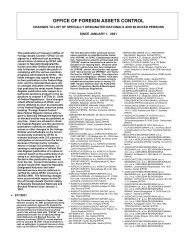Residential Foreclosures in the City of Buffalo, 1990-2000 - Federal ...
Residential Foreclosures in the City of Buffalo, 1990-2000 - Federal ...
Residential Foreclosures in the City of Buffalo, 1990-2000 - Federal ...
You also want an ePaper? Increase the reach of your titles
YUMPU automatically turns print PDFs into web optimized ePapers that Google loves.
Hous<strong>in</strong>g Condition<br />
In general, <strong>the</strong> city <strong>of</strong> <strong>Buffalo</strong> tends to have much <strong>of</strong> <strong>the</strong> region’s oldest hous<strong>in</strong>g. Yet<br />
surpris<strong>in</strong>gly, foreclosures are most concentrated <strong>in</strong> communities with relatively newer,<br />
better conditioned hous<strong>in</strong>g and comparatively high homeownership rates.<br />
The Real Estate Market<br />
A generally reduced demand for hous<strong>in</strong>g has contributed to an overall decl<strong>in</strong>e <strong>in</strong> property<br />
values. The communities show<strong>in</strong>g <strong>the</strong> most significant decl<strong>in</strong>e <strong>in</strong> home prices tend to<br />
have high foreclosure rates. Decl<strong>in</strong><strong>in</strong>g home values are likely contribut<strong>in</strong>g to foreclosures<br />
<strong>in</strong> <strong>the</strong>se neighborhoods, and <strong>the</strong>y may be a direct result <strong>of</strong> <strong>the</strong>m as well, s<strong>in</strong>ce foreclosed<br />
properties typically sell for appreciably less than surround<strong>in</strong>g properties. Our f<strong>in</strong>d<strong>in</strong>gs<br />
suggest that foreclosure is contribut<strong>in</strong>g to <strong>the</strong> decl<strong>in</strong>e <strong>of</strong> home prices <strong>in</strong> <strong>Buffalo</strong>, because<br />
foreclosed properties have accounted for a significant share <strong>of</strong> sales <strong>in</strong> <strong>the</strong> city. It is likely<br />
that <strong>the</strong>se distressed properties are priced lower than <strong>the</strong>y would be if sold<br />
conventionally.<br />
Mortgage Lend<strong>in</strong>g Trends<br />
<strong>Foreclosures</strong> on FHA and Conventional Loans<br />
Foreclosure rates <strong>in</strong> <strong>Buffalo</strong> tended to be higher on <strong>Federal</strong> Hous<strong>in</strong>g Adm<strong>in</strong>istration<br />
(FHA) mortgages than on conventional mortgages. However, <strong>in</strong> terms <strong>of</strong> distribution,<br />
foreclosures were more likely to be on conventional loans: about 59 percent, versus 38<br />
percent for FHA loans.<br />
Purchase, Ref<strong>in</strong>ance, and Assumed Loans<br />
<strong>City</strong>wide, <strong>the</strong> loans taken by foreclosed borrowers were more likely to be for <strong>the</strong><br />
purchase <strong>of</strong> a home than for a ref<strong>in</strong>anc<strong>in</strong>g, and purchase loans overall performed<br />
somewhat worse than ref<strong>in</strong>anc<strong>in</strong>g loans. Purchase mortgages accounted for 56 percent <strong>of</strong><br />
foreclosures, compared with 34 percent for ref<strong>in</strong>ance loans. Even higher concentrations<br />
were found <strong>in</strong> <strong>Buffalo</strong>’s East Delavan and North East communities.<br />
5



